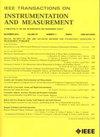QGD-OE: IMU Orientation Estimation Based on Gradient Descent in the Quaternion Field
IF 5.6
2区 工程技术
Q1 ENGINEERING, ELECTRICAL & ELECTRONIC
IEEE Transactions on Instrumentation and Measurement
Pub Date : 2025-01-24
DOI:10.1109/TIM.2025.3533661
引用次数: 0
Abstract
Orientation estimation based on inertial measurement units (IMUs) has emerged as a promising solution for real-time orientation tracking. Quaternion numbers are frequently employed by estimation algorithms to represent orientation in 3-D space. In recent years, gradient descent-based algorithms have been extensively utilized for quaternion-based orientation estimation due to their simplicity and effectiveness. However, the real functions of quaternion variables are nonanalytic. Current state-of-the-art algorithms for orientation estimation based on gradient descent methods overcome this obstacle by transforming the problem from the quaternion domain into the real domain. In contrast, we leverage the mathematical definition of the quaternion gradient based on the generalized Hamilton-real (GHR) algebra to solve the orientation estimation optimization problem based on IMUs directly in the quaternion domain. More specifically, we derive the accelerometer and magnetometer gradient descents in the quaternion domain and propose the quaternion gradient descent orientation estimation (QGD-OE) algorithm to estimate orientation from these gradient descents. We compare our QGD-OE algorithm with two state-of-the-art orientation estimation algorithms. We find that the QGD-OE algorithm achieves higher accuracy, improved robustness, and shorter convergence time than state-of-the-art methods. The comparison highlights the deficiencies of transforming from the quaternion domain into the real domain and underscores the importance of conducting gradient descent and estimation optimization in the quaternion domain.求助全文
约1分钟内获得全文
求助全文
来源期刊

IEEE Transactions on Instrumentation and Measurement
工程技术-工程:电子与电气
CiteScore
9.00
自引率
23.20%
发文量
1294
审稿时长
3.9 months
期刊介绍:
Papers are sought that address innovative solutions to the development and use of electrical and electronic instruments and equipment to measure, monitor and/or record physical phenomena for the purpose of advancing measurement science, methods, functionality and applications. The scope of these papers may encompass: (1) theory, methodology, and practice of measurement; (2) design, development and evaluation of instrumentation and measurement systems and components used in generating, acquiring, conditioning and processing signals; (3) analysis, representation, display, and preservation of the information obtained from a set of measurements; and (4) scientific and technical support to establishment and maintenance of technical standards in the field of Instrumentation and Measurement.
 求助内容:
求助内容: 应助结果提醒方式:
应助结果提醒方式:


